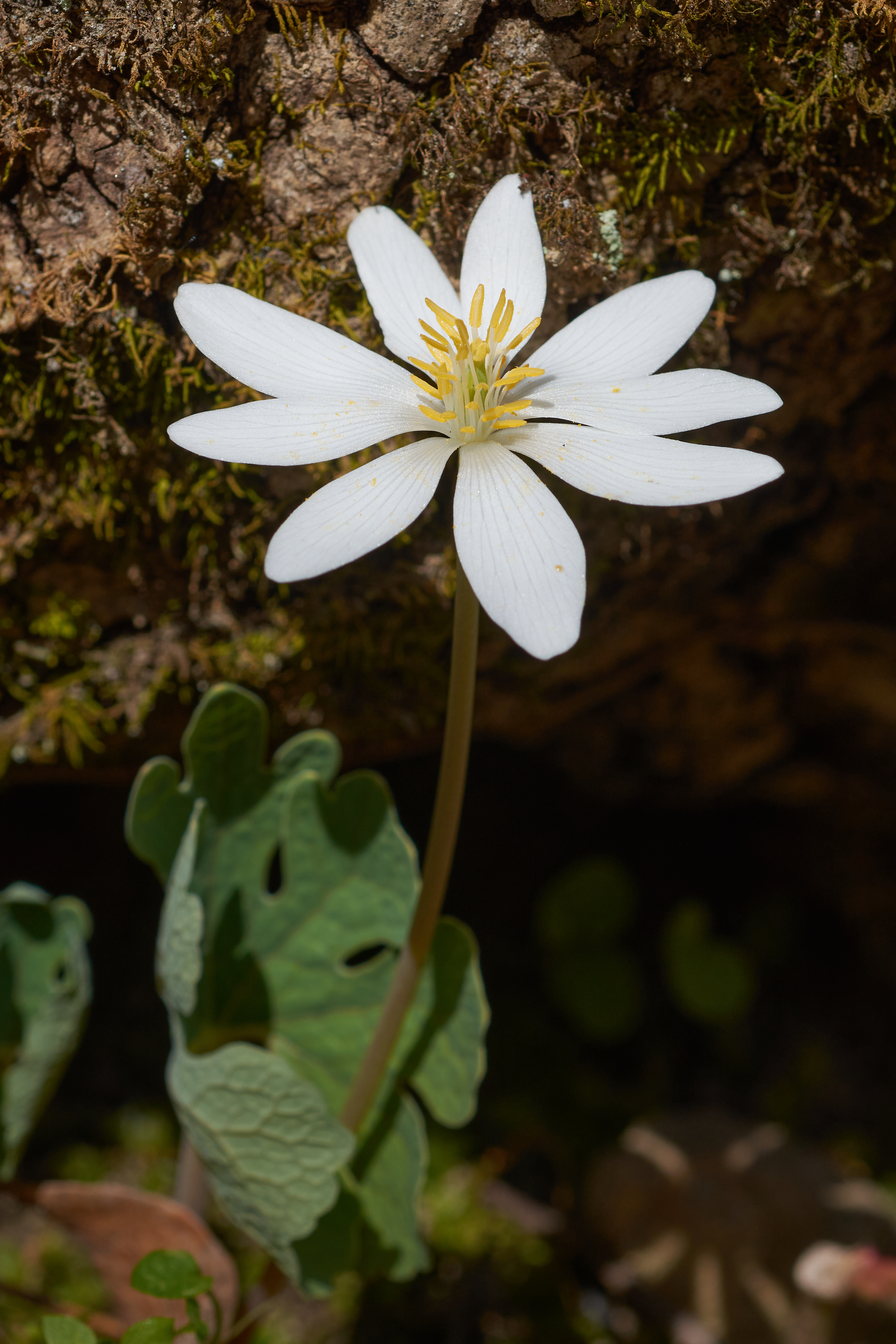Bloodroot Plant: A Comprehensive Guide
Introduction
Bloodroot, also known as Sanguinaria canadensis, is a perennial plant native to North America. It is a member of the poppy family and is prized for its medicinal properties and stunning white flowers. In this article, we will explore the various uses of the bloodroot plant, its cultivation and care, and its potential benefits and risks.
History and Traditional Uses
Bloodroot has a long history of use by Native American tribes for its medicinal properties. It was traditionally used to treat various ailments, including respiratory issues, skin conditions, and digestive problems. The plant gets its name from the red sap found in its roots, which was used as a dye and as a traditional medicine.
Appearance and Characteristics
Bloodroot is a small plant that typically grows to a height of 6-12 inches. It has lobed leaves and a single white flower that blooms in early spring. The plant prefers shady, moist conditions and can be found growing in forests and woodlands throughout North America.
Cultivation and Care
Bloodroot can be grown in the garden or in containers, but it requires specific growing conditions to thrive. The plant prefers moist, well-drained soil and partial shade. It should be planted in the fall or early spring and watered regularly to keep the soil moist. Bloodroot is a low-maintenance plant that does not require much fertilizer or pruning.
Medicinal Uses

Bloodroot has been used in traditional medicine for centuries and is still used today in herbal remedies. The plant contains compounds that have anti-inflammatory, antimicrobial, and antioxidant properties. It is commonly used to treat skin conditions, such as warts and moles, and is also used in oral hygiene products.
Potential Benefits and Risks
While bloodroot has potential health benefits, it also carries risks. The plant contains toxic compounds that can be harmful if ingested in large quantities. Ingesting bloodroot can cause nausea, vomiting, and potentially more serious health issues. It is important to use caution when using bloodroot as a medicinal herb and to consult with a healthcare provider before starting any new treatment.
Harvesting and Preparation
Bloodroot roots are typically harvested in the fall or early spring when the plant is dormant. The roots should be dug up carefully to avoid damaging the plant. Once harvested, the roots can be dried and ground into a powder for use in herbal remedies. The red sap of the plant can also be collected and used in tinctures and salves.
Common Uses in Herbal Remedies
Bloodroot is a versatile plant that can be used in a variety of herbal remedies. It is commonly used topically to treat skin conditions, such as warts, moles, and skin tags. The plant’s antimicrobial properties make it an effective treatment for infections and inflammation. Bloodroot can also be used internally to treat respiratory issues and digestive problems.
Side Effects and Precautions
While bloodroot has potential health benefits, it can also cause side effects and interactions with other medications. Some people may experience skin irritation or allergic reactions when using bloodroot topically. Ingesting bloodroot can cause nausea, vomiting, and other gastrointestinal issues. It is important to use caution when using bloodroot as a medicinal herb and to consult with a healthcare provider before starting any new treatment.
Legal Status and Regulation
Bloodroot is legal to grow and use in the United States, but it is regulated by the FDA for its potential toxicity. The plant should be used with caution and in moderation to avoid potential health risks. It is important to source bloodroot from reputable suppliers and to follow proper safety guidelines when using the plant in herbal remedies.
FAQs
Is bloodroot safe to use?
While bloodroot has potential health benefits, it can also be toxic if ingested in large quantities. It is important to use caution when using bloodroot as a medicinal herb and to consult with a healthcare provider before starting any new treatment.
Can bloodroot be grown in the garden?
Yes, bloodroot can be grown in the garden or in containers, but it requires specific growing conditions to thrive. The plant prefers moist, well-drained soil and partial shade.
What are the traditional uses of bloodroot?
Bloodroot has been used for centuries by Native American tribes for its medicinal properties. It was traditionally used to treat respiratory issues, skin conditions, and digestive problems.
Conclusion
In conclusion, bloodroot is a fascinating plant with a long history of use in traditional medicine. While it has potential health benefits, it is important to use caution when using bloodroot as a medicinal herb and to consult with a healthcare provider before starting any new treatment. With proper care and attention, bloodroot can be a valuable addition to your herbal remedy collection.






